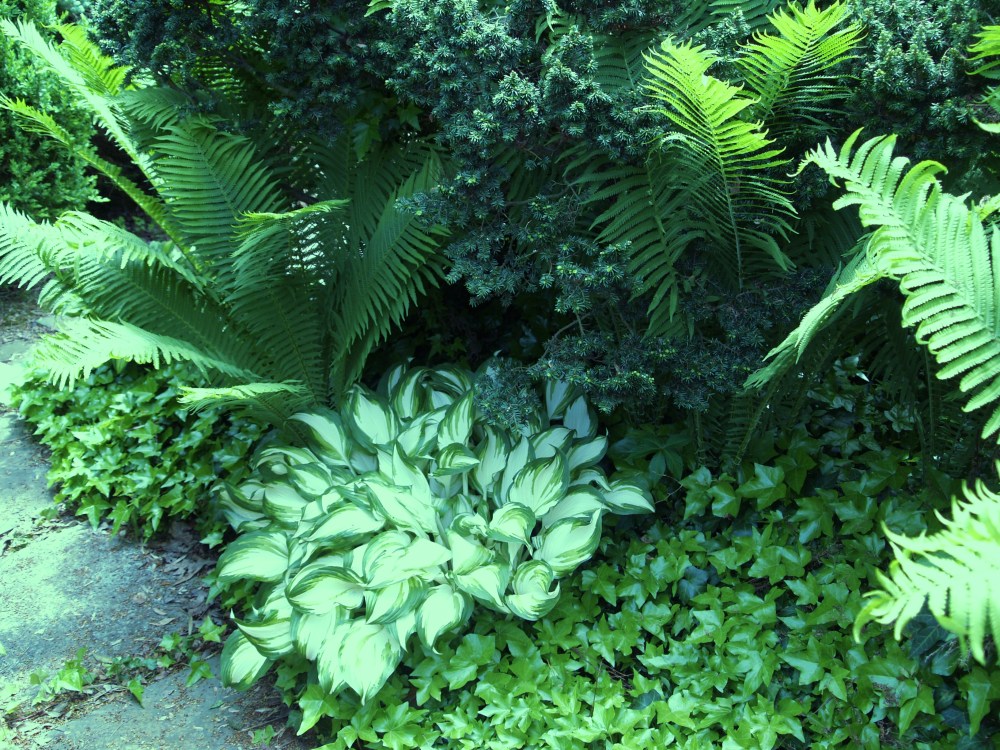I’m readily smitten by trees and shrubs, and though there’s barely enough room to walk through the garden, I find a way to plant more. Perennials and tropicals are an entirely different matter. There’s always room to jam another little plant into the garden so long as I’m willing to ignore the fact that they’re likely to grow larger. In fact, I’m more than willing. I’m happy to ignore reality.
I once planted a variegated Norway maple (Acer platinoides ‘Drummondii’) in the garden, though it’s been so long ago that I’ve forgotten where it was. Today, Norway maples of any sort are virtually banned from gardens due to its invasive tendencies. I hate to admit it, but at the time I thought the variegated foliage would be a nice addition to the garden despite the monstrous dimensions the maple would one day grow to. By good fortune or not, ‘Drummondii’ proved too tender to tolerate the heat and humidity of northwestern Virginia, and it steadily went downhill and didn’t survive the second winter.
But, I’m not easily dissuaded. Four or five years ago I saw the variegated Sycamore maple ‘Eskimo Sunset’ (Acer pseudoplatanoides ‘Eskimo Sunset’, above and below) in an Oregon nursery and knew that I had to give it a try, despite my earlier bad experience. ‘Eskimo Sunset’ has foliage splotched with cream and sometimes pink in the spring, and to prevent fading references recommend planting it with a bit of shade from the blazing afternoon sun. Sorry, I’ve run out of spots like that, but at least it’s shaded from the early morning sun (which does no good at all).
There’s likely to be a good reason that Sycamore maples are not commonly grown in Virginia, and it’s probably because they are stressed and grow dreadfully slow in the heat. And ‘Eskimo Sunset’ is noted as a slow starter, with a ten year old tree expected to be only ten feet tall. So, at least it hasn’t given up and died, but it barely grows, which is probably not such a bad thing since there’s no space for it to grow to thirty or forty feet. In any case, the spring foliage is magnificent, and the variegation doesn’t fade as much as I feared through the summer, so to my way of thinking this has worked out wonderfully.
Earlier in the spring I planted a Floating Cloud Japanese maple (Acer palmatum ‘Ukigumo’, above and in the garden below). It is possible (though not likely) that this will be the last of twenty three Japanese maple varieties that I plant in the garden. Even the smallest Japanese maples take up a considerable space, and there’s no room for more unless something else is chopped out.
The Floating Cloud maple is planted just above the largest of the garden’s ponds in a spot that was occupied by a yucca that was once one of the gold types, but new growth reverted to green. The yucca was getting a little haggard in its old age (I know the feeling), so when I was searching for a spot for the Japanese maple this was as good as I could come up with. The yucca was easily dispatched, but there remains a concern. The nearly white foliage of the Floating Cloud is easily damaged by the afternoon sun, and this spot is completely in the open with no protection from the sun at all. Will the leaves fry?
With the stress of the transplant the maple’s foliage is mostly green this spring, but I’m hoping that the coolness of the nearby water will help in future years. Thus far the Japanese maple has tolerated the sun and late frost and freezes, so things are looking up. If not, I’ll figure something else.
Beautiful photos!